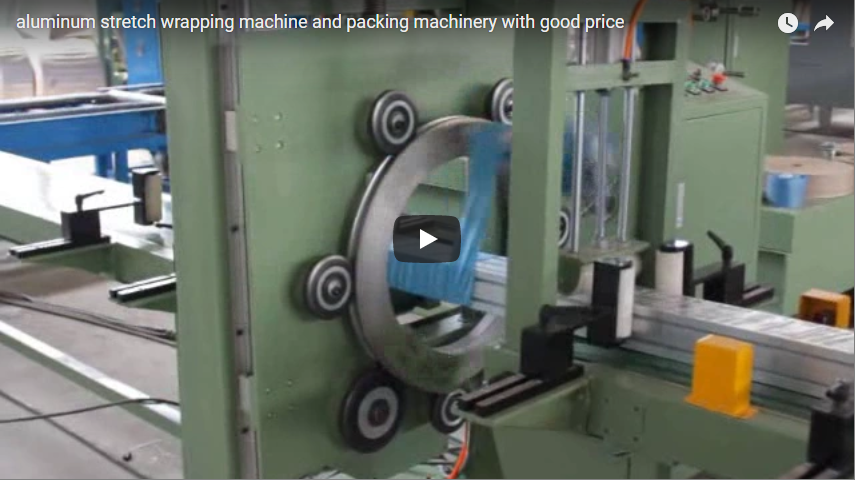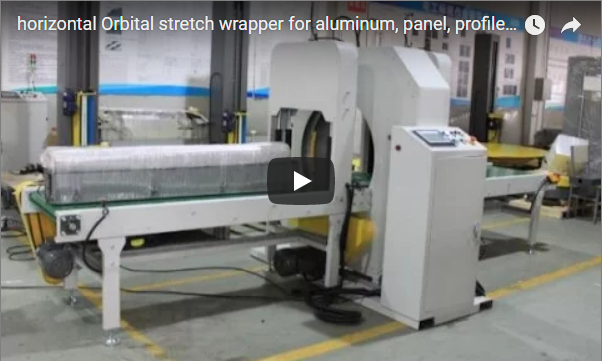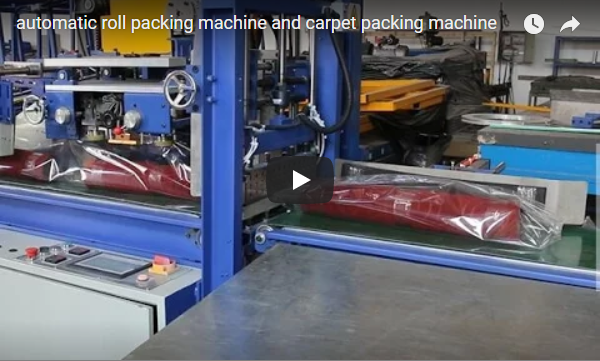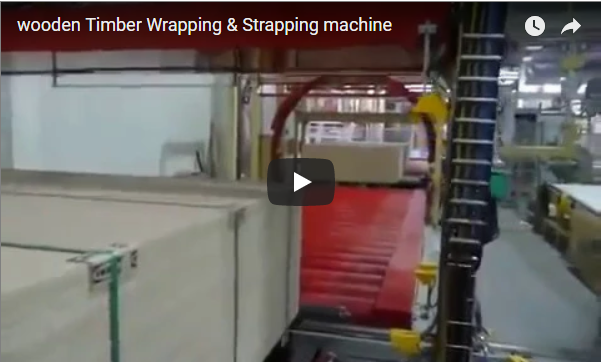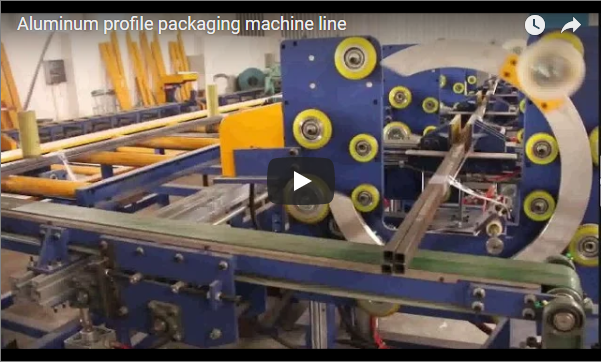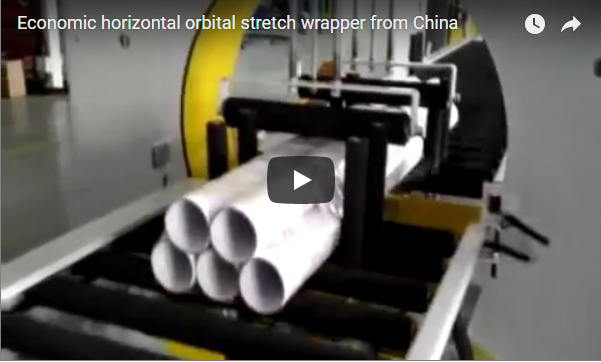# Optimizing Timber Packaging: A Deep Dive into Automated Wrapping and Strapping Machines
Handling and packaging wooden timber products presents unique challenges due to their size, weight, and susceptibility to damage or environmental factors. Efficient and secure packaging is crucial for storage and transportation. Automated systems combining wrapping and strapping offer a robust solution for the timber and wood processing industries. This article explores the functionality, benefits, and key considerations of these essential machines.
### 1. Understanding the Core Functionality: Wrapping and Strapping Integrated
A wooden timber wrapping and strapping machine is an integrated packaging system designed specifically for elongated products like lumber, beams, panels, and other wood materials. Its primary functions are:
* **Wrapping:** Typically utilizing stretch film (or sometimes VCI paper/film for corrosion protection), the machine encases the timber bundle. This provides protection against moisture, dust, and UV rays, while also unitizing the load. Most commonly, this is achieved using a horizontal orbital wrapper configuration.
* **Strapping:** After wrapping, high-tensile straps (usually PET or steel) are applied around the bundle at predetermined points. This provides structural integrity, prevents shifting during handling, and secures the protective wrap.
This dual-action process ensures timber products are both environmentally protected and securely unitized for safe and efficient logistics.
### 2. The Wrapping Process Explained: Orbital Stretch Film Application
The automated wrapping sequence generally follows these steps:
* **Infeed:** Timber bundles are conveyed into the wrapping zone, often automatically indexed for proper positioning.
* **Film Dispensing:** A carriage holding a roll of stretch film rotates orbitally around the horizontally moving timber product.
* **Wrapping Cycle:** The film is applied helically as the bundle passes through the rotating ring. Advanced systems feature pre-stretch capabilities (stretching the film before application), maximizing film yield and load containment force.
* **Tension Control:** Precise control over film tension is critical. It must be tight enough to secure the load but not so tight as to damage corners or edges of softer wood products. Variable tension settings are a key feature.
* **Film Cut and Seal:** Once the bundle is fully wrapped, the film is automatically cut and secured (often via a heat seal or wiping mechanism).
### 3. The Strapping Stage: Securing the Load
Immediately following or integrated within the same system, the strapping process adds crucial stability:
* **Strap Feeding:** The machine feeds the chosen strap material (typically PET for its balance of strength and elasticity, or steel for very heavy loads) around the wrapped bundle.
* **Tensioning:** The strap is pulled tight to a preset tension level, compressing the bundle slightly and securing the wrap. Consistent tension across multiple straps is vital.
* **Sealing:** The ends of the strap are joined securely. Common methods include:
* **Friction Weld:** For PET straps, high-speed friction melts and fuses the strap ends.
* **Heat Seal:** Another method for thermoplastic straps.
* **Metal Seals/Clips:** Often used with steel strapping, requiring a separate sealing tool mechanism.
* **Strap Cutting:** The excess strap material is cut flush.
Multiple straps are typically applied along the length of the timber bundle for optimal stability.
### 4. Key Technical Specifications to Consider
When evaluating timber wrapping and strapping machinery, fabricators and processors should focus on parameters relevant to their specific needs:
* **Ring Rotation Speed (RPM):** Determines the wrapping throughput (bundles per hour). Needs to match production line speed requirements.
* **Conveyor Speed (m/min or ft/min):** Must be synchronized with upstream and downstream equipment. Variable speed control is often essential.
* **Maximum Pack Dimensions (Width x Height):** Defines the largest timber bundle the machine can accommodate. Ensure it matches your product range.
* **Maximum Pack Weight (kg or lbs):** Critical for ensuring conveyors and machine structure can handle the load.
* **Wrapping Material Specifications:** Compatible film types (stretch, VCI), roll widths, core diameters, and pre-stretch capabilities (e.g., 150%, 250%, 300%).
* **Strapping Head Type:** Compatibility with PET or steel strapping, strap widths, and thicknesses. Sealing method (friction weld, heat seal, mechanical).
* **Number of Strapping Heads:** Some configurations allow for multiple straps to be applied simultaneously or at different positions.
* **Control System:** PLC-based controls with HMI (Human-Machine Interface) touchscreen for setting parameters, diagnostics, and recipe management.
* **Power Requirements:** Voltage, phase, and compressed air consumption.
### 5. Operational Advantages in Fabrication & Processing
Investing in automated timber wrapping and strapping yields significant benefits:
* **Enhanced Throughput:** Machines operate continuously at speeds far exceeding manual methods, reducing bottlenecks in the packaging stage.
* **Consistent Package Quality:** Automated control ensures uniform wrap tension, overlap, and strap placement for every bundle, improving load integrity and appearance.
* **Improved Product Protection:** Properly applied stretch film shields timber from environmental damage (moisture, dirt), while secure strapping prevents shifting and abrasion during transit.
* **Reduced Labor Dependency:** Automating this physically demanding task frees up personnel for higher-value activities and reduces labor costs associated with manual wrapping and strapping.
* **Enhanced Workplace Safety:** Minimizes manual handling of heavy bundles and repetitive motions associated with hand wrapping/strapping, reducing the risk of worker injuries.
* **Material Savings:** Film pre-stretch systems can significantly reduce stretch film consumption compared to manual application. Precise strap tensioning avoids over-use.
### 6. Integration into Production Lines
These machines are rarely standalone units. Effective integration involves:
* **Conveyor Systems:** Seamless connection with infeed and outfeed conveyors from saws, planers, or sorting lines.
* **Sensors and Logic:** Product detection sensors to initiate cycles, safety interlocks, and integration with overall line control logic.
* **Customization:** Adapting guarding, layout, and features to fit specific plant constraints and workflow requirements.
### 7. Maintenance and Operational Tips: Ensuring Longevity and Performance
To maximize uptime and performance, consider these practical points:
* **Regular Cleaning:** Keep film paths, strap chutes, and sealing mechanisms free of dust and debris.
* **Lubrication:** Follow manufacturer guidelines for lubricating rotating rings, bearings, and moving parts.
* **Wear Part Inspection:** Regularly check film cutting blades, strap grippers, and sealing components for wear and replace as needed.
* **Tension Calibration:** Periodically verify that film and strap tension settings are accurate.
* **Operator Training:** Ensure operators are properly trained on machine operation, safety procedures, and basic troubleshooting.
### Conclusion: A Necessary Investment for Modern Timber Operations
Automated wooden timber wrapping and strapping machines represent a significant step forward from manual packaging methods. They offer quantifiable improvements in efficiency, package quality, product protection, and worker safety. By carefully considering technical specifications and integration requirements, timber processors and fabricators can implement systems that streamline their end-of-line packaging, ensuring their products reach customers in optimal condition while optimizing operational costs.
https://www.fhopepack.com/Horizontal_wrapping_machine.html
info@fhopepack.com

